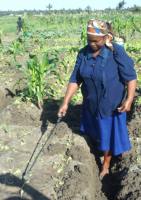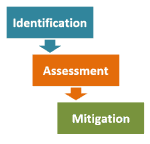Introduction to Highly Hazardous Pesticides (HHP)
Definition:
The International Code of Conduct on Pesticide Management defines Highly Hazardous Pesticides (HHPs) as:
pesticides that are acknowledged to present particularly high levels of acute or chronic hazards to health or environment according to internationally accepted classification systems such as WHO or GHS or their listing in relevant binding international agreements or conventions. In addition, pesticides that appear to cause severe or irreversible harm to health or the environment under conditions of use in a country may be considered to be and treated as highly hazardous
Why do HHPs need special attention?
 HHPs can present:
HHPs can present:
- High acute human toxicity
- Chronic human toxicity
- Severe environmental hazards
Special attention is also needed because:
- Over 95% of pesticide poisonings occur in Lower and Middle Income Countries (LMICs)
- A small group of HHPs is responsible for a high proportion of poisoning incidences
- Most farmers are not able to meet safety requirements for HHPs
- Less hazardous alternatives are available in many cases
- An estimated 20% of suicides globally are attributed to pesticides, and in particular to acutely toxic HHPs. Download the Resource guide for pesticide registrars and regulators on preventing suicide.
International policy context
The reduction of risks posed by HHPs has become a priority issue within international chemicals management policies:
- The FAO Council requested specific attention for HHP risk reduction, including consideration of a possible progressive ban on HHPs (2006)

- The WHO issued a policy brief on public health concerns related to HHPs (2010)

- The FAO/WHO International Code of Conduct on Pesticide Management (2020)
 specifically addresses reduction of risks posed by HHPs (articles 3.6Article 3.6: Pesticides whose handling and application require the use of personal protective equipment that is uncomfortable, expensive or not readily available should be avoided, especially in the case of smallscale users and farm workers in hot climates.,7.5Article 7.5: Prohibition of the importation, distribution, sale and purchase of highly hazardous pesticides may be considered if, based on risk assessment, risk mitigation measures or good marketing practices are insufficient to ensure that the product can be handled without unacceptable risk to humans and the environment.and9.4.1Article 9.4.1: Support the process of information exchange and facilitate access to information on matters including pesticide hazards and risks, residues in food, drinking water and the environment, the use of pesticides in or on non-food products, IPM/IVM, pesticide efficacy, alternatives to highly hazardous pesticides and related regulatory and policy actions;).
specifically addresses reduction of risks posed by HHPs (articles 3.6Article 3.6: Pesticides whose handling and application require the use of personal protective equipment that is uncomfortable, expensive or not readily available should be avoided, especially in the case of smallscale users and farm workers in hot climates.,7.5Article 7.5: Prohibition of the importation, distribution, sale and purchase of highly hazardous pesticides may be considered if, based on risk assessment, risk mitigation measures or good marketing practices are insufficient to ensure that the product can be handled without unacceptable risk to humans and the environment.and9.4.1Article 9.4.1: Support the process of information exchange and facilitate access to information on matters including pesticide hazards and risks, residues in food, drinking water and the environment, the use of pesticides in or on non-food products, IPM/IVM, pesticide efficacy, alternatives to highly hazardous pesticides and related regulatory and policy actions;). - The SAICM 4th International Conference of Chemicals Management (ICCM4) adopted a resolution (2015) that recognizes HHPs as an issue of international concern
 and calls for concerted action to address HHPs
and calls for concerted action to address HHPs
FAO/WHO Guidelines on HHPs
FAO and WHO issued specific Guidelines on HHPs (2016) to help countries address HHPs. This document contains:
- Criteria for identification of HHPs
- Steps of the risk reduction process for HHPs
- Elements of an action plan to reduce the risks posed by HHPs
Download the Guidelines on Highly Hazardous Pesticides (2016)[en/fr/es] 
HHP risk reduction process
 The HHP risk reduction process consists of three main consecutive steps:
The HHP risk reduction process consists of three main consecutive steps:
- Identification of HHPs
Check registered pesticides against the eight FAO/WHO HHP criteria
- Assessment of HHPs
Assess each product for risks and needs to determine whether action is desirable
- Mitigation of HHP risks
Determine for each product whether risk mitigation measures are required, and if so, which risk mitigation options would be most appropriate

